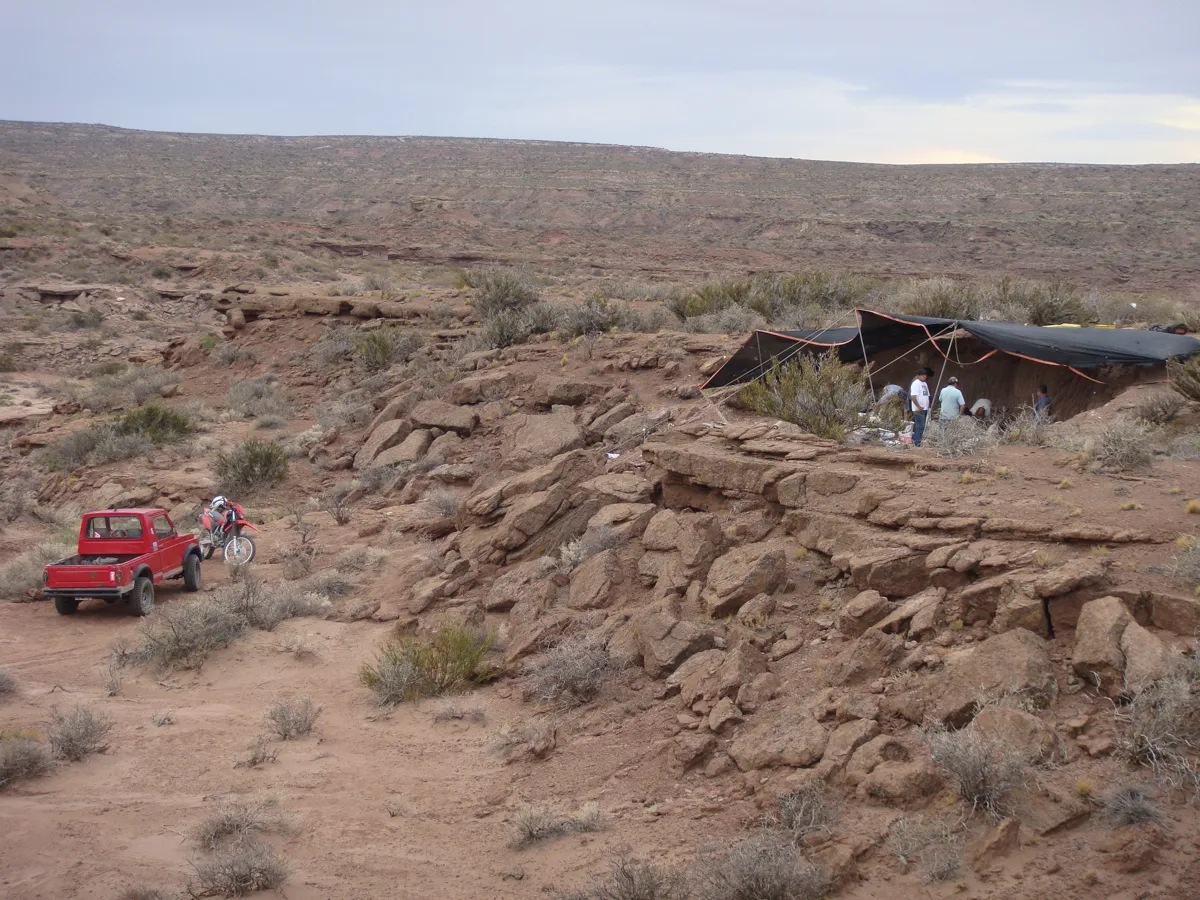Scientists have unearthed the fossil of a new species of dinosaur in northern Patagonia, Argentina. The dinosaur, namedMeraxes gigas, was a giant, carnivorous dinosaur with short arms, like the well-knownTyrannosaurus rex.
The dinosaur is a member of the Carcharodontosauridae family, one of at least four of the big predator theropods who evolved – separately – disproportionally small forelimbs. The skeleton found was about 11 metres long, and weighed more than four tons.
No one knows the exact function of these dinosaurs' arms, but those who found the new Meraxesfossil say they were probably used for non-predatory activities, like supporting movement or to hold one another during mating.
"Meraxes was a top predator at its time," said Juan Canale, the project lead at Ernesto Bachmann Paleontological Museum. "They were carnivorous dinosaurs, and they fed on herbivorous dinosaurs, likely titanosaurs and rebbachisaurids."
The dinosaur found by Canale and team was around 45 years old, a fully grown adult. The dinosaur's skull revealed bumps and small hornlets, which Canale says would appear in Meraxes once they reached maturity, and might have been used to attract a mate.
The species name was chosen by the researchers. It is called 'Meraxes', after a dragon from the George RR Martin book series that inspired Game Of Thrones, and 'gigas', which is Greek for giant, due to its large size.

The carcharodontosaurids were dominant predators, and lived on most continents during the Early Cretaceous, considered to be sometime between 145 and 100 million years ago.
“The group flourished and reached a peak of diversity shortly before they became extinct [in the Late Cretaceous period]," said Canale. This was some 20 million years before the first T. rex. The two species are so far apart on the family tree that the tiny arms would have evolved separately for some survival advantage, rather than because arms were useless to the dinosaurs.
Canale is convinced that those proportionally tiny arms had some sort of function, as the skeleton shows evidence of large muscles and developed pecs. The arms were strong, but they weren’t used for fighting, said Canale.
“[Finding the fossil] was probably one of the most exciting points of my career,” Canale said. "It has a lot of novel information, and it is in superb shape. We will now keep working on this material, describing in detail the bones and performing CT scans to see internal spaces... there is much work to do!"
Read more about Tyrannosaurus rex:
